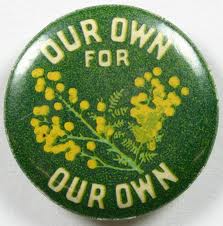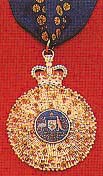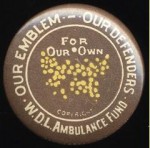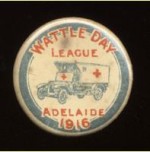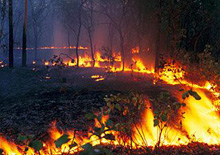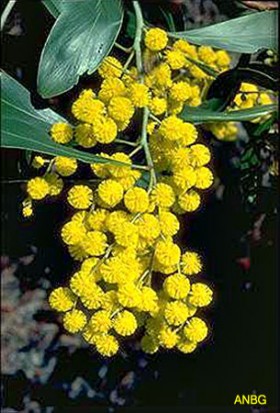Wattle Day should replace Invasion Day
Thursday, January 26th, 2012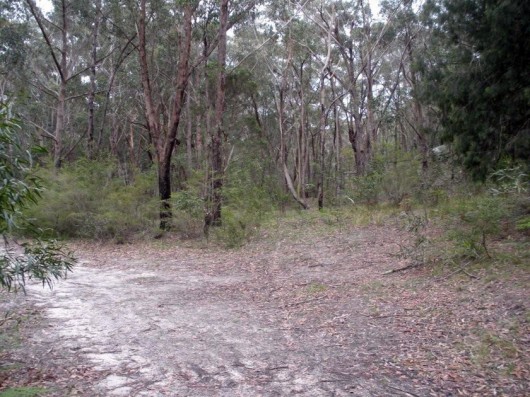 This photo looks to be an innocuous clearing in the Australian scrub somewhere,
which makes this photo all the more representative of the intangible meaning of a place.
Just as few Australians will be aware of this site, few Australians will be aware of what happened here in 1816.
The site is in Appin outside Sydney.
It is the site of the little known massacre of an unknown number of Australian Aborigines by a posse sent out by the government to murder them and who did just that.
This photo looks to be an innocuous clearing in the Australian scrub somewhere,
which makes this photo all the more representative of the intangible meaning of a place.
Just as few Australians will be aware of this site, few Australians will be aware of what happened here in 1816.
The site is in Appin outside Sydney.
It is the site of the little known massacre of an unknown number of Australian Aborigines by a posse sent out by the government to murder them and who did just that.
.
‘Call to return massacre site to Aboriginal people’
[Source: ‘Call to return massacre site to Aboriginal people‘, by ABC state political reporter Mark Tobin, 20101108, ^http://www.abc.net.au/news/stories/2010/11/08/3060655.htm?site=sydney].
A New South Wales MP has begun a campaign for greater recognition to be given to the descendants of those killed in the 1816 Appin Aboriginal Massacre south-west of Sydney.
The official number of those killed is 14 but some historians believe the death toll is much higher. Aboriginal men, women and children were shot, while others were driven off a steep cliff.
The events of April 17, 1816 can be traced back a few years earlier. Tit-for-tat violence between the British and Aborigines caused the New South Wales Governor Lachlan Macquarie to order retribution. The orders are recorded in governor Macquarie’s diary which is kept at Sydney’s Mitchell Library.
“I therefore, tho (sic), very unwillingly felt myself compelled, from a paramount sense of public duty, to come to the painful resolution of chastising these hostile tribes, and to inflict terrible and exemplary punishments upon,” reads the diary entry from 10 April 1816.
“I have this day ordered three separate military detachments to march into the interior and remote parts of the colony, for the purpose of punishing the hostile natives, by clearing the country of them entirely, and driving them across the mountains.
“In the event of the natives making the smallest show of resistance – or refusing to surrender when called upon so to do – the officers commanding the military parties have been authorised to fire on them to compel them to surrender; hanging up on trees the bodies of such natives as may be killed on such occasions, in order to strike the greater terror into the survivors.”
The captain in charge of the mission was James Wallis. He recorded in his journal that 14 people were killed in the Appin region.
“I regret to say some had been shot and others met their fate while rushing in despair over the precipice,” Captain Wallis said.
But Dharawal man and local historian Gavin Andrews says civilians continued killing Aborigines after the military forces returned to Sydney.
“They went hunting. They went on a black hunt and of course most of the blacks out there were the women and children,” Mr Andrews said.
Mr Andrews believes many more than 14 were killed.
“Well, it is a lot more and what is not recorded is the following three or four days of the militia and the farmers on their killing fields exercise around this countryside here,” he said.
Mr Andrews’s wife is Frances Bodkin. She is a direct descendent of one of the men killed in 1816.
“Kannabi Byugal was one of my ancestors. He was my great grandfather’s grandfather, I think. I get mixed up with all the greats,” Ms Bodkin said. She still does not go to the cliffs where the women and children fell to their deaths.
“You know it’s fear and I don’t understand why I am afraid, but I am afraid and I have this awful choking feeling inside me so I can’t face it. Even now I still can’t face it,” she said.
.
The massacre site is on land owned by the New South Wales Government. Ms Bodkin believes the site of the massacre should be in Aboriginal hands.
“I’d like to return it to what it was before to make it a place that is happy, that it was before the massacres,” she said.
Ms Bodkin has got the support of MP Phil Costa, who is now lobbying the State Government.
“So what we are trying to do now here is to hand this land back to the people who originally lived here or owned it so the story can be told, so it can be a place of healing,” he said.
“If there is a place so sacred as this is to the local Aboriginal community it ought to go back to them.”
.
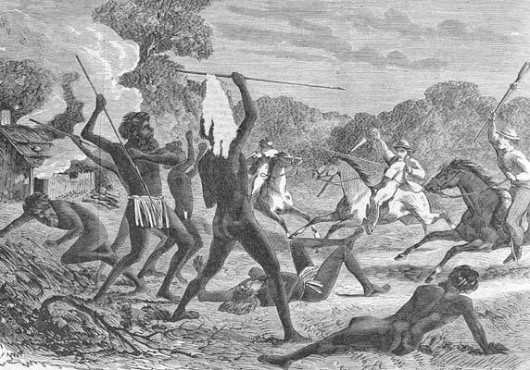 This illustration depicts another massacre of Aborigines twenty odd years later.
This illustration depicts another massacre of Aborigines twenty odd years later.
.
The Myall Creek Massacre saw colonial settlers led by a squatter, John Fleming, shooting up to 30 unarmed Australian Aborigines of the local Kamilaroi tribe on 10 June 1838 – largely women, children and old men. After the massacre, Fleming and his gang rode off looking to kill the remainder of the group who they knew had gone to the neighbouring station. They returned two days later to Myall Creek and dismembered and burnt the bodies.
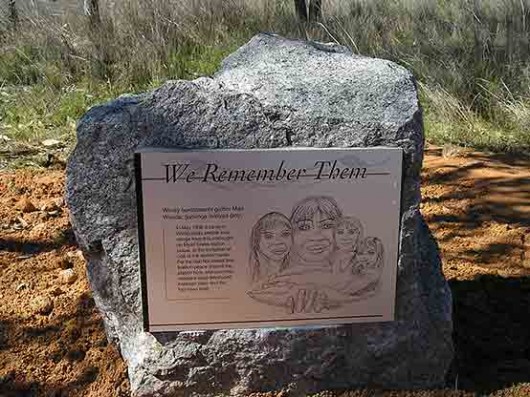 Memorial plaque at Myall Creek
40km west of Inverell in northern New South Wales
Memorial plaque at Myall Creek
40km west of Inverell in northern New South Wales
.
Call to stop celebrating ‘Invasion Day’
.
“Australia Day is traditionally the most racist day of the year for Aboriginal people. When people celebrate on January 26, there is no escaping the fact they are celebrating the day that one race of people invaded another race of people’s country and took control of Aboriginal lands and tried to dominate Aboriginal people. Invasion Day, as it should be called, celebrates the dispossession of land, culture, and way of life of Aborigines.Aborigines and members of the wider community should not allow this to continue. Otherwise we are saying that it was ok to try to destroy the Aboriginal way of life, to murder Aborigines and to attempt cultural genocide.True reconciliation cannot be achieved and a just society cannot be built if we continue to celebrate the gains of one race at the expense of another.Invasion Day is a day to remember the wrongs that were committed against Aborigines, a day to remember the injustices forced upon one race of human beings by another.This is no day for celebrating; it’s a day for mourning, a time to reflect, and a time to steel ourselves for the ongoing battle for a better society.” [Source: Jay McDonald, an activist with the Tasmanian Aboriginal Centre, Launceston, quotation reproduced on ^http://meltjoeng.com/?p=2046].
.
Editor: Australia needs to leave the British colonial nest. The current national celebration of Australia Day falls on 26th January each year (today). It is the day the British landed the First Fleet at Sydney Cove and proclaimed British sovereignty over the eastern seaboard of New Holland. (Ed: corrected thanks to the comment below). It was a British invasion of foreign land and preceded many massacres of the traditional people to the point of genocide.
Today, Australia’s national strategic security and being a first world wealthy nation, our important interests are to our region, not to Britain, not to the United States.
We have a moral responsibility to democratic human rights in our region, namely in West Papua, and it is despicable that successive Liberal-Labor governments shun the injustices inflicted on the people of our region, in favour of pouring taxpayer billions to support the strategic interest of the US on the other side of the globe.
Celebrating invasion day is an insult to those whose forebears were invaded, displaced, murdered, raped, persecuted and wiped out by colonial diseases. The map of the hundreds of Aboriginal nations was erased by a colonial map of six States. The landscape was butchered and tamed by colonists trying to emulate the old country, planting deciduous trees around settlements to remind them of the four seasons of European origins.
Australia does not have four seasons. It probably has at least six and the traditional people of this land recognise these by the flowering times of certain native plants and trees. Wattle Day, the 1st of September, would seem a uniquely Australian and non-partison way to celebrate Australia Day.
.
The Wattle is Australia’s floral emblem.
“Wattle is a unifying symbol and in its multitude of forms, it grows in every state and territory. Its profusion is a sign of fertility for a growing nation. As a symbol of nature, it is a sign of the depth of feeling Indigenous people have for their land. Their ecological practice is an outcome of their relations of kinship with the natural world and they contribute a great deal to land management across Australia based on their eco-knowledge. There are a wide range of cooperative activities between Indigenous groups, government and industry. Indigenous people refer to these as ‘looking after country‘.”
[Source: ‘Why Wattle Day should be our national day‘, by Paul W. Newbury, 20110123, ^http://www.eurekastreet.com.au/article.aspx?aeid=24746].
Read More: >Australian National Wattle Day: 1st Sept.
